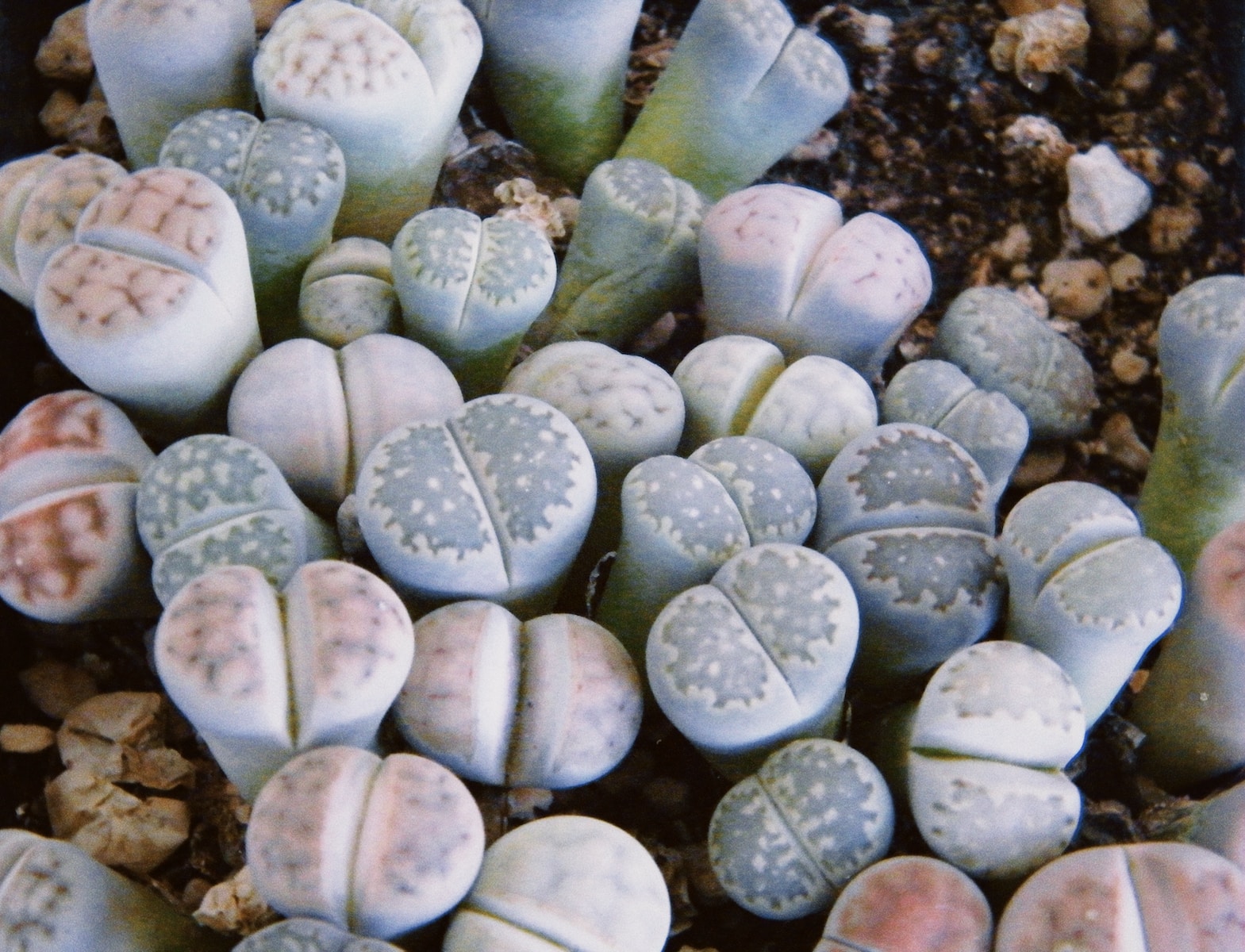Lithops, commonly known as “living stones,” are intriguing succulents that have evolved to resemble the stones and pebbles of their native habitat. Native to the dry regions of southern Africa, these fascinating plants are small and almost stemless, making them an exciting and unconventional choice for indoor plant enthusiasts.
The appearance of Lithops is truly remarkable, with pairs of fleshy leaves that are fused together to form a shape resembling a split rock or stone. The plants have adapted to their harsh, arid environments by minimizing their exposed surface area to reduce water loss. During the growing season, Lithops produce a single daisy-like flower that emerges from the cleft between the leaves.
Growing Lithops requires some understanding of their unique life cycle and needs. Unlike other houseplants, Lithops care is more about withholding resources rather than providing them. These plants are perfect for those interested in botany, natural history, and of course, anyone who likes the unusual and extraordinary in the plant world.
| Attribute | Details |
|---|---|
| Common Names | Living Stones, Pebble Plants |
| Botanical Name | Lithops |
| Family | Aizoaceae |
| Plant Type | Succulent |
| Mature Size | 1-2 inches high |
| Sun Exposure | Full Sun |
| Soil Type | Sandy, well-drained |
| Hardiness Zones | 9-11 |
| Native Area | Southern Africa |
Lithops Care
Caring for Lithops is an interesting journey, as these plants have a unique growth cycle that must be respected. They require a very specific watering regimen that corresponds to their growing and resting stages.
The main aspect of Lithops care is to understand when NOT to water. These plants have a period of dormancy during the summer, and they undergo a natural process of shedding old leaves and growing new ones in the spring and autumn. Watering during the transition stages can lead to rotting.
Light Requirement for Lithops
Lithops thrive in full sun and need a bright environment to grow properly. A south or west-facing window is typically suitable. In their natural habitat, Lithops receive intense sunlight, so providing ample light encourages healthy growth and flowering.
Soil Requirements for Lithops
These succulents require sandy, well-draining soil. A mixture containing sand, perlite, and a small amount of organic matter usually works well. The soil should mimic the natural gritty terrain of their native habitat to prevent water-logging.
Water Requirements for Lithops
Watering Lithops can be tricky, as it depends on the plant’s growth stage. During the growth and flowering stage, usually in the spring and fall, Lithops should be watered sparingly. In the summer and during the leaf replacement process, watering should be avoided entirely.
Temperature and Humidity
Lithops prefer temperatures between 65-80°F (18-27°C) and can tolerate temperatures as low as 50°F (10°C) during their dormant phase. They don’t require high humidity and can thrive in a typical household environment.
Fertilizer
Lithops generally do not need fertilization. If desired, a very dilute solution of a balanced fertilizer can be applied once during the growing season, but this is usually unnecessary.
Pruning Lithops
Pruning is not required for Lithops. The old leaves naturally wither away as new leaves grow, and any interference with this process can harm the plant.
Propagating Lithops
Lithops can be propagated from seed or by dividing the plant. Division should be done with care, as the plant’s structure is delicate. It is often easier and more successful to grow Lithops from seed.
How To Grow Lithops From Seed
Growing Lithops from seed is an enjoyable process for enthusiasts. Sow the seeds in a sandy mix, keep them moist, and provide bright, indirect light. Germination can take a few weeks, and seedlings must be treated gently, following the same care guidelines as mature plants.
Common Pests & Plant Diseases
Mealybugs
Mealybugs can be a problem for Lithops. They can be treated with insecticidal soap or removed manually.
Fungal Diseases
Overwatering can lead to fungal diseases. It is crucial to follow the correct watering schedule.
Common Problems With Lithops
Overwatering
Overwatering is the most common problem and can lead to rot. Follow the watering guidelines closely to prevent this issue.
Sunburn
While Lithops need bright light, they can suffer from sunburn if exposed to intense, direct sunlight without acclimatization.
Pro Tips
- Respect the Lithops’ growth cycle by withholding water during their dormant and transitioning stages.
- Provide a sunny location but be cautious of intense, direct sunlight without gradual acclimatization.
- Use a well-draining soil mix to mimic their natural habitat.
- Avoid the temptation to overcare; Lithops thrive on neglect.




